 With its fanciful architecture and nice restaurants Barcelona has become one of Europe’s most attractive destination within a short period time. With its fanciful architecture and nice restaurants Barcelona has become one of Europe’s most attractive destination within a short period time.
The sunny Spanish climate and the beaches makes Barcelona a place to enjoy and have fun. It is a destination offering almost everything to everyone: music, good food, art and history, culture, fun and shopping, beaches and discos.
THE CITY
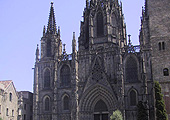 Barcelona was founded by the Romans on the Mediterranean. The original settlement, called Barcino, was a small port located where the Cathedral is nowadays. Barcelona was founded by the Romans on the Mediterranean. The original settlement, called Barcino, was a small port located where the Cathedral is nowadays.
Visigoths and the Moors invaded Barcelona. But the arrival of the Franks in the 9th century had a strong influence on the City. It was at that point, Barcelona and Catalonia started shaping its own identity. One of the differences is very clear the language.
Spanish has many Arab words while Catalan has many French words. Catalan is not a Spanish dialect but a language in its own related to other roman languages.
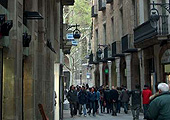 Barcelona’s history is obvious everywhere in the city. The oldest areas are by the sea, including the shopping enclave Barri Gotic.
Barcelona’s history is obvious everywhere in the city. The oldest areas are by the sea, including the shopping enclave Barri Gotic.
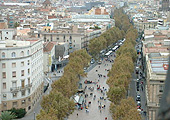 On the other side of the main boulevard, Las Ramblas, there is the well known Raval area. Until the 1980s this was a poor and degraded area, home to the city’s own Chinatown (Barrio Chino). Today fancy shops, cafes, and museums have moved in. On the other side of the main boulevard, Las Ramblas, there is the well known Raval area. Until the 1980s this was a poor and degraded area, home to the city’s own Chinatown (Barrio Chino). Today fancy shops, cafes, and museums have moved in.
Further north there is the fashionable Eixample, an area created in the 19th century when the city expanded as it is today. The long and straight streets are broken up by tiny diagonal squares at the intersections.
Santa Maria del Mar One of the most beautiful churches of Barcelona, it is probably the best example of the Catalonian Gothic. The church has a wonderful feeling of spaciousness and the weightlessness is emphasised by the pillars and the decorated chapels.
 Sagrada Família Antonio Gaudí was a Catalan architect, who belonged to the Modernisme (Art Nouveau) movement and was famous for his unique style and highly individualistic designs. Sagrada Família Antonio Gaudí was a Catalan architect, who belonged to the Modernisme (Art Nouveau) movement and was famous for his unique style and highly individualistic designs.
The Sagrada Família is the most famous work of Gaudí, to which he dedicated all his life. It is an expression of Gaudi’s genius craziness at the point that he lived inside the church to closely follow the works. It is the unique great temple at present in construction everywhere in the world. It is an astonishing site to visit once in Barcelona!
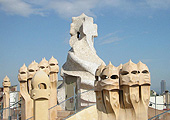 Gaudì created many worldwide known works among which: next to Sagrada Familia Casa Mila or “La Pedrera” is probably Gaudì’s second most popular building in Barcelona. Other Gaudì’s places to visit in Barcelona are the beautiful Park Guell, theCasa Calvet, the Guell Palace and the “Manzana de la Discordia” Gaudì created many worldwide known works among which: next to Sagrada Familia Casa Mila or “La Pedrera” is probably Gaudì’s second most popular building in Barcelona. Other Gaudì’s places to visit in Barcelona are the beautiful Park Guell, theCasa Calvet, the Guell Palace and the “Manzana de la Discordia”
EATING
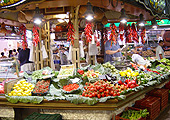 In Barcelona it is possible to find all kind of restaurants. The easiest thing is to divide them into two categories: the new and the old ones. Some of the world’s most modern restaurants can be found here. There is also the traditional Catalonian cuisine with very good vegetable dishes (grilled or peeled peppers, aubergines and onions, fried spinach with garlic, etc.). A common and well known dish is a slice of bread with olive oil, salt, and freshly crushed tomatoes. The new restaurants can be very expensive, but many of the best known chefs’ apprentices have opened their own lower-priced restaurants. Generally, you should always reserve a table in Barcelona. Dinner is not served before 9 p.m. In Barcelona it is possible to find all kind of restaurants. The easiest thing is to divide them into two categories: the new and the old ones. Some of the world’s most modern restaurants can be found here. There is also the traditional Catalonian cuisine with very good vegetable dishes (grilled or peeled peppers, aubergines and onions, fried spinach with garlic, etc.). A common and well known dish is a slice of bread with olive oil, salt, and freshly crushed tomatoes. The new restaurants can be very expensive, but many of the best known chefs’ apprentices have opened their own lower-priced restaurants. Generally, you should always reserve a table in Barcelona. Dinner is not served before 9 p.m.
COFFEE BARS
Barcelona’s cafe culture is half Italian: “Café con leche” (café amb llet in Catalan) is for breakfast, preferably with a croissant. Mid-day, especially after the lunch, the locals have an espresso with milk. In the afternoon or after dinner it is possible to order a “cortado” (strong espresso) or a “carajillo” (a café with Spanish brandy).
TAPAS BAR
Las Tapas is one of the most well-known aspect of the Spanish and Catalan tradition. The philosophy of the tapas is in serving a small snack (free or pay) joined by a beverage. The Tapas bars are usually crowed around 7pm. There is a wide choice ranging from olives to abundant rations of ham to any kind of cheese. There are so many tapas bars in Barcelona that you can start your long night in Barcelona with this special taste of typical Spanish food together with a good glass of wine or beer!
NIGHT LIFE
Barcelona’s trendy nightlife is in a constant state of change. This makes it impossible to list the hippest bars and nightclubs. The best advice is to ask around for the latest and greatest places.
SHOPPING
 Barcelona is among Europe's cities of style. Everything from books to jewels, haute couture (local and international), designer furniture, etc. can be easily found. Several markets animate squares around the centre of town. Most of the stores can be found on a shopping axis: from the waterfront through La Rambla to Placa de Catalunya and on to Passeig de Gracia. Barcelona is among Europe's cities of style. Everything from books to jewels, haute couture (local and international), designer furniture, etc. can be easily found. Several markets animate squares around the centre of town. Most of the stores can be found on a shopping axis: from the waterfront through La Rambla to Placa de Catalunya and on to Passeig de Gracia.
The best shopping areas in central Barcelona are Passeig de Gracia and Barri Gotic (i.e. Carrer de la Portaferrissa, Carrer de la Boqueria, Carrer del Call, Carrer de la Llibreteria and Carrer de Ferran, around Placa de Sant Josep Oriol).
The big department stores (such as El Corte Ingles) and shopping complexes (such as El Triangle) tend to open from 9-10am through to 9-10pm. From Monday to Saturday smaller shops often close for a few hours at lunchtime
Visiting the La Boquería, half way down La Rambla, is something of a must because you will enjoy an incredible contrast between colours and activities. It is interesting to discover the Mediterranean cuisine, internationally known due to its ingredients. In the Boquería the best products from Catalonia can be easily found.
OPEN AIR CONCERTS
 Choirs taking part in the Festival, will have the unique chance to sing and have fun in some of most spectacular parts on Barcelona. The open air concerts take place mainly in the Barrio Gotico around:
Choirs taking part in the Festival, will have the unique chance to sing and have fun in some of most spectacular parts on Barcelona. The open air concerts take place mainly in the Barrio Gotico around:
Plaça Sant Jaume (the square is at the centre of the original Roman settlement of Barcino.
Nowadays the City Hall of Barcelona and the seat of the Catalan regional government are located here) this plaza is home to the Ajuntament, (City Hall) and the Palau de la Generalitat (seat of the Catalan regional government).
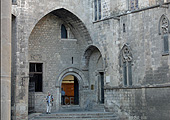 Placa del Rei (this wholly preserved medieval courtyard of the Royal Palace is where Ferdinand and Isabella are supposed to have received Columbus on his return from the New World. Placa del Rei (this wholly preserved medieval courtyard of the Royal Palace is where Ferdinand and Isabella are supposed to have received Columbus on his return from the New World.
La Catedral (this impressive Catalan Gothic church, begun in 1298, is the third church built on this site, the first being a Roman temple, and houses the tomb of Saint Eulàlia, the first patron saint of Barcelona.)
PARADE THROUGH THE HISTORICAL STREETS OF BARCELONA
 All choirs will parade with the typical dresses of their countries, in one of the nicest part of Barcelona on a pedestrian street very close to the Ramblas. All choirs will parade with the typical dresses of their countries, in one of the nicest part of Barcelona on a pedestrian street very close to the Ramblas.
 All choirs will meet up in Plaça Catalunya and will go down through the Portal del Angel, Portaferrissa area, plenty of shops and life. All choirs will meet up in Plaça Catalunya and will go down through the Portal del Angel, Portaferrissa area, plenty of shops and life.
CHURCH OF SANTA MARIA OF THE PINE
(where the Festival is held)
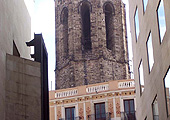 The Església de Santa Maria del Pi is a 14th-century Gothic church that stands at the heart of three little plazas in Barcelona. Santa Maria del Pi is on the Placa Sant Josep Oriol, the prettiest of the three squares in the area. It is filled with an artists' market on the weekend and the outdoor tables of the Bar del Pi the rest of the time. The Església de Santa Maria del Pi is a 14th-century Gothic church that stands at the heart of three little plazas in Barcelona. Santa Maria del Pi is on the Placa Sant Josep Oriol, the prettiest of the three squares in the area. It is filled with an artists' market on the weekend and the outdoor tables of the Bar del Pi the rest of the time.
 The church is named for the pine tree (pi in Catalan) that once stood nearby The church is named for the pine tree (pi in Catalan) that once stood nearby
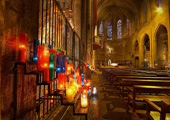 Santa Maria del Pi has a Romanesque door but is otherwise Catalan Gothic in style. It has a single wide nave with chapels beneath the buttresses and a giant rose window at the entrance. The interior is plain but features some beautiful stained glass windows. The church was burned out in 1936 and restored in the 1960s. Santa Maria del Pi has a Romanesque door but is otherwise Catalan Gothic in style. It has a single wide nave with chapels beneath the buttresses and a giant rose window at the entrance. The interior is plain but features some beautiful stained glass windows. The church was burned out in 1936 and restored in the 1960s.
SURROUNDINGS OF BARCELONA
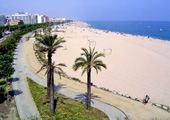 CALELLA CALELLA
Known as the tourist capital of the Maresme Coast, Calella is a cosmopolitan and lively city with the typical Mediterranean weather. Between Barcelona and Girona, it is an ideal tourist destination.
MALGRAT DE MAR
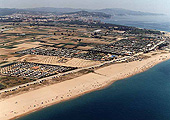 Halfway from Girona and Barcelona, Malgrat de Mar is a quite and charming city which turns during summer in one of the best place to go and stay of the Costa Brava. Halfway from Girona and Barcelona, Malgrat de Mar is a quite and charming city which turns during summer in one of the best place to go and stay of the Costa Brava.
Vatican City Rome
During your stay in Roma you will not only sing in the most beautiful churches with a good acoustics and meet people from all over the world, but you also visit the unique sites of the Eternal City and the charming cities near Rome:
You cannot leave ROME without a tour of the ruins and monuments of the Roman Empire with the Colosseum, one of the most famous buildings in the world, symbol of Eternal City with its enormous dimensions. You will be able to make a tour in the Roman Forum, perhaps the most fascinating expression of ancient Roman civilization. There are several other important things and place to visit in this ancient part of the town as the Capitol Hill, the smallest of Rome’s seven hills, characterized today by the solemnity of Michelangelo’s unique architecture, as many other sites.
If you want to discover the so called Romantic Rome, you must go to the Trevi Fountain, Rome’s biggest fountain. This is an obligatory stop for every visitor who wishes to assure his return to Rome in the future by throwing a coin into the fountain over his shoulder. You will admire the Spanish Steps, one of the most picturesque scenes of Rome and finally the Pantheon, Emperor Hadrian’s monumental temple, an impressive and enormous construction from the Roman Empire which has survived almost intact until our days. Your visit can finish with a tour in one of the most famous squares of Rome – Piazza Navona where you can have a stop and taste the typical Italian ice cream.
Last but not least, we suggest a tour of Christian Rome with visit to the patriarchal basilicas: St. Paul Outside the Walls which has been the biggest church in the world before the new construction of St. Peter’s, the Basilica of St. John in Lateran, called “Mother and Capital of all Churches in the City and the Continent”. Another patriarchal basilica, St. Mary Major, is the biggest among the 80 Marian shrines in Rome. Its sumptuous interior is one of the most beautiful and solemn sacral spaces in Rome.
|
THE REGION OF LAZIO is found in central Italy, located on the Tyrrhenian Sea. It borders with Tuscany, Marches, Umbria, Abruzzi, Campania and Molise. In general, Lazio has a mild climate thanks to the influence of the Mediterranean Sea. Lazio offers a variety of landscapes including lakes, mountains and sea and a lot of chances from the point of view of tourism.
For those who want to discover Lazio history and origins throughout monuments, archaeological sites and ruins of ancient populations the region offers a wide range of possibilities. Lazio also allows tourists to choose a different kind of tourism, discovering the oeno-gastronomic itineraries and showing the unique traditions and peculiarities of Lazio cooking style. Lazio Region hosts lots of events, fairs, exhibitions in the frame of entertainment in general. All initiatives are aimed at bettering tourist offer and making the Region attractive both to foreigners and Italian visitors.
Italian Colli Albani, or Monti Albani, area of extinct volcanoes southeast of Rome. The Alban hills are a beautiful place situated 25 Km in the hills southeast of Rome. Nearby there are two little lakes called Albano and Nemi. The Alban hills were a place sacred to the people of Latium. Old Roman roads, temples, villas, and theatres are still preserved there. Because of their coolness in summer, the hills for centuries have been a favourite summer resort of old Romans people. The vineyards produce the popular wines known as "Frascati Superiore DOC", "Cannellino", etc. Art and culture, centuries-old traditions: these are the Italian Colli Albani. The range is from archaeology to wine food and culture; all within the territory of the Alban Hills ( 39 municipalities) in the immediate vicinity of Rome. You will be able to visit unique sites: the land of the Tusculum Villas; archaeological sites (such as the amphitheatre and the cisterns of Albano). Concerning food and wine, you will taste the bread baked in Genzano, roast pork from Ariccia, the famous wine, including the inimitable “fraschette” jars of Frascati”. It is strongly suggested to make a walk in the villages streets, shop for traditional and fashionable products, meet friendly people in the numerous bars and pubs, visit the antique markets hosted in different villages, or have an authentic meal in the restaurants, taste local foods and wines in a pleasant and lively atmosphere.
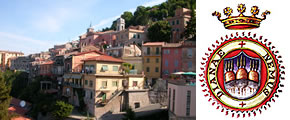 Nemi has a very long history, most significant is the temple of Diana goddess of fertility and the woods, and of course the Roman ships of Caligula. Nemi is also famous for the wild strawberries known as “fragoline”. The Lake of Nemi lies on the volcanic complex of The "Colli Albani". Less famous but more suggestive, the lake-filled Nemi crater is smaller and shallower than the Albano crater. The town of Nemi is located on the northern rim of the Nemi crater, allowing for extremely beautiful views onto the crater lake below. To the southwest there is the village of Genzano. The area is renowned as one of the most suggestive nature regions in Italy and as a part of a natural park, it has for the most part been preserved intact. Nemi has a very long history, most significant is the temple of Diana goddess of fertility and the woods, and of course the Roman ships of Caligula. Nemi is also famous for the wild strawberries known as “fragoline”. The Lake of Nemi lies on the volcanic complex of The "Colli Albani". Less famous but more suggestive, the lake-filled Nemi crater is smaller and shallower than the Albano crater. The town of Nemi is located on the northern rim of the Nemi crater, allowing for extremely beautiful views onto the crater lake below. To the southwest there is the village of Genzano. The area is renowned as one of the most suggestive nature regions in Italy and as a part of a natural park, it has for the most part been preserved intact.
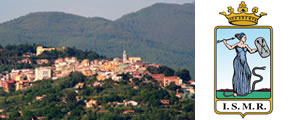 Lanvuvio is a charming and cosy town at 30 km from Rome. It has a beautiful and wide panorama on the valley below that gradually descends till the sea. It is a crossroads of history and culture that goes back into the past. Thanks to the discovery of archeological relics, it is possible to say that Lanuvio was already existing in the IX century B.C. It was a rich city during the Roman Empire and started to decline after the IV Century Edit who ratified the Christianity as the religion of the Roman Empire. The City revived in the XII century with the Benedictine monks. Later on nobles Roman families such as the Colonna, Cesarini and the Cesarini-Sforza were ruling Lanuvio. The walk into the historical part of the medieval town with the Colonna Palace and the Church of the Collegiata is amazing without forgetting the archeological area of the Giunone Sospita Temple on the top of the old acropolis which is nowadays Sforza Cesarini Villa. Lanvuvio is a charming and cosy town at 30 km from Rome. It has a beautiful and wide panorama on the valley below that gradually descends till the sea. It is a crossroads of history and culture that goes back into the past. Thanks to the discovery of archeological relics, it is possible to say that Lanuvio was already existing in the IX century B.C. It was a rich city during the Roman Empire and started to decline after the IV Century Edit who ratified the Christianity as the religion of the Roman Empire. The City revived in the XII century with the Benedictine monks. Later on nobles Roman families such as the Colonna, Cesarini and the Cesarini-Sforza were ruling Lanuvio. The walk into the historical part of the medieval town with the Colonna Palace and the Church of the Collegiata is amazing without forgetting the archeological area of the Giunone Sospita Temple on the top of the old acropolis which is nowadays Sforza Cesarini Villa.
Lake Albano lies 293 metres (961 feet) above sea level. With its smooth surface, functions as a natural amphitheatre. The lake is part of the volcanic complex of Colli Albani that constitute an extremely scenic landscape and is a quite popular weekend destination for numerous Romans. Right on the rim of the crater is Castel Gandolfo which hosts the summer residence of the Pope. Albano and Castel Gandolfo can look back upon a long history. According to legend, Ascanius, son of Aeneas, founded there Alba Longa; it was the oldest capital of the Sabine league. In the XII century the area of Castel Gandolfo was dominated by a castle belonging to the Roman noble family of the Gandolfi, who gave the town its name. Castel Gandolfo is the town chosen by the Popes for their holiday. In the centre of the Castelli Romani, it has a panorama of extraordinary beauty, embracing the Lake and all its beauty and charm. At the sunset you can admire the spectacular lights dancing on the water of the Lake, where the atmosphere is really magic
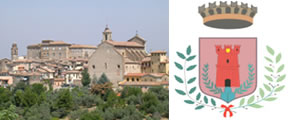 As well as Colli Albani, the Sabina region is also worth a visit. The region, only 50km from Rome, presents rich and varied landscapes: hills covered in olive trees, as well as century old woods and forest, mountains, small rivers and lakes. In the area you will find many castles and fortresses, monastery, beautiful medieval villages, Roman villas. The mild climate and attracts many Romans and tourists who chose to spend their summer holydays in Sabina. In the town of Poggio Mirteto, on top of a hill you can enjoy a breathtaking view and if the sky is clear you can even see St. Peter’s dome! In the surroundings, you can visit various Franciscan monasteries. I the area, the town of Casperia and the Farfa Abbey are not to be missed. As well as Colli Albani, the Sabina region is also worth a visit. The region, only 50km from Rome, presents rich and varied landscapes: hills covered in olive trees, as well as century old woods and forest, mountains, small rivers and lakes. In the area you will find many castles and fortresses, monastery, beautiful medieval villages, Roman villas. The mild climate and attracts many Romans and tourists who chose to spend their summer holydays in Sabina. In the town of Poggio Mirteto, on top of a hill you can enjoy a breathtaking view and if the sky is clear you can even see St. Peter’s dome! In the surroundings, you can visit various Franciscan monasteries. I the area, the town of Casperia and the Farfa Abbey are not to be missed.
|
|
Organizer
Courtial International s.r.l.
Via Paolo VI, 29 – 00193 Roma
Tel.: +39 06 6889951 - +39 06 68899528
Fax: + 39 06 68308568
email: info@courtial-international.it
Patronage
Associazione Internazionale Amici della Fondazione Pro Musica e Arte Sacra
LINKS REGARDING THE CITY OF ROME (CULTURE, RESTAURANTS, ETC.)
Comune di Roma
www.comune.roma.it
Museums in Rome
www.museidiroma.com
Tourism in Rome
www.romaturismo.it
Tours and visits of Rome
www.romecity.it
Tourism in Lazio Region
www.turislazio.it
Castelli Romani
www.turismo-castelliromani.it
Castel Gandolfo
www.castelgandolfo.org
Comune di Nemi
www.comunedinemi.it
Comune di Fregene
www.afregene.it
Comune di Lanuvio
www.comune.lanuvio.rm.it
Comune di Poggio Mirteto
www.comunepoggiomirteto.ri.it
Pro Loco di Poggio Mirteto
www.prolocopoggiomirteto.org
Regione della Sabina
www.sabina.it
TRANSPORT INFORMATION (BUSES, TRAINS, ETC.)
Bus and metro in Rome
www.atac.roma.it
Airport in Rome (Fiumicino and Ciampino)
www.adr.it
Trains
www.trenitalia.it
|
